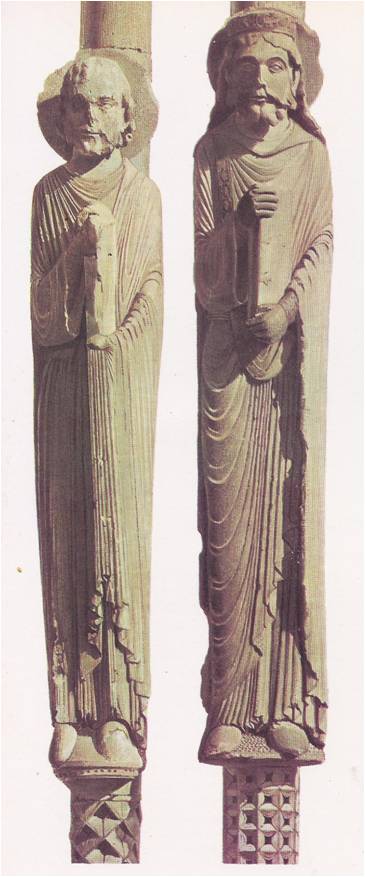IN THE YEAR 1134, in the town of Chartres in France, the church burned down. The church was a cathedral — that is, it was the church of a bishop. The bishop at that time was Theodoric and he immediately began the construction of another cathedral. He knew that the task would not be an easy one; it meant raising large sums of money and finding many workmen and the actual work of building would take years. Bishop Theodoric allowed nothing to stop him, he won the support of the people, of commoners and nobles alike. An eye-witness, who visited Chartres in 1144, wrote that “kings, princes, mighty men of the world, puffed up with honours and riches, men and women of noble birth,” helped in the work, pulling wagons loaded with “wine, corn, oil, lime, stones, beams and other things necessary to sustain life or build churches. . . .” Although a thousand men and women were drawing wagons, “yet they go forward in such silence that no voice, no murmur, is heard. . . When they pause on the way no words are heard but confessions of guilt, with supplications and pure prayer. . . . The priests preach peace, hatred is soothed, discord is driven away, debts are forgiven, unity is restored.” The cathedral was complete in 1180, but fourteen years later a fire broke out again, destroying most of the building. It also destroyed the towns people’s houses. They would have given up both the church and the town if it had not been for a representative of the pope. The fire was God’s punishment for their sins, he warned, and now they must restore the cathedral and put up new houses. The towns people did as he said. Money for the rebuilding of the church …
Read More »Feudal Germany 936 -1250
THE WINTER of 1077 was one of the coldest on record in Italy. Ice and snow choked the mountain passages in the north and snowdrifts were piled high well into the south — as far south as the castle of Canossa, which was southeast of Parma. The fortified castle belonged to the countess of Tuscany and here Pope Gregory VII had taken refuge, fearing an attack by his enemies. On January 25, a man stood outside the Castle gate, barefoot in spite of the snow and cold. He was no ordinary penitent come to ask forgiveness of the pope. He was Henry IV of Germany, emperor of the Holy Roman Empire. He had made a long and perilous journey with his wife, his young son and a few followers. For three days the emperor waited for the pope to pardon him and lift the ban of excommunication. Excommunication was banishment from the Church and was the most terrible punishment that could be given to a believer of the Middle Ages. Excommunication meant that he was deprived of all the privileges of a Christian. He could not attend church services, he was denied the sacraments, he could not be buried in consecrated ground. In excommunicating Henry, Pope Gregory hoped to force him to acknowledge the pope’s authority to appoint his own bishops. Henry knew that until the ban of excommunication was lifted his nobles would not accept him as king; he had little choice but to humiliate himself. Pope Gregory, for his part, knew that Henry would be a dangerous opponent once he was restored to the throne, but Gregory, too, had little choice; it was his Christian duty to take back into the Church anyone who begged so humbly for forgiveness. As Gregory later wrote, Henry “came in person to …
Read More »

